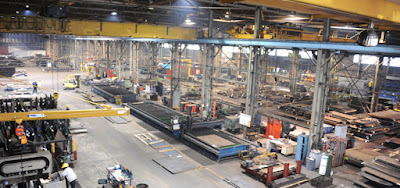The Prefab Solution to Philippines’ Traffic Congestion
Construction workers and home builders in the Philippines should update their skills and knowledge base because of the rise of prefab bridges and houses. What is the meaning of prefab in the construction industry? According to Cambridge Dictionaries Online, prefab or prefabricated is “build from parts that have been made in a factory and can be put together quickly.” It is like Lego only a lot more complicate.
Several prefab homes and bridges are found in the country. Prefab homes are common but bridges? Yes, it exists. Just like the prefabricated steel flyover in the city of Malolos, Bulacan by Mabey Bridge, a UK construction firm. I was skeptical at first (I live here, by the way) but after I read this case study, I ceased to question its validity.
Based on the paper, “the bridge was manufactured at Mabey Bridge’s UK manufacturing facility and shipped to the Philippines in standard ISO containers. The finished construction, measuring 280m in length and 7.35m in width was completed in just 63 days… [the said project was through the] country’s ‘President Bridge Programmes’ to open up feeder roads in rural areas.” Hmm, that was the reason it was erected in a jiffy.
Bridges are not only built to connect towns but to help ease traffic as well. This is the purpose of the flyover in the city of Malolos.
Ah, traffic!
Traffic jams could bring out the worst in us. In a column on BusinessMirror, it says an average Juan “waste[s] 28,000 hours of his economic life because of heavy vehicular traffic.”
Waze Global Driver Satisfaction Index, the first in the world, rated 32 countries and 167 metro areas. It has a scoring system from satisfying (10) to miserable (1). We know you don’t have to be reminded how head-splitting our commute is every day, nonetheless, here is the result:
At least we’ve got a higher score in the ‘safety index.’ It is good to know, based on the views of the respondents, that our roads our perceptively safe. You read that right. Safe. A word that will not be discussed after this paragraph… Moving forward!
It is disheartening that we were rated as having the second worst driving experience in the world. A score we shouldn’t be proud of. But what can we do to solve this bottleneck problem?
Jorge Consunji, president of DM Consunji Inc., said in an interview in Manila Bulletin that they are planning to propose to the incoming administration the construction of “instant flyovers” or prefab flyovers. This could be an instant solution to the current problem we’ve been enduring for decades. It is also faster to build compared to the conventional flyover which takes 18 months to build. Will it really take just 18 months? Will leave that for you to find out.
However, there is a downside with Mr. Consunji’s proposition because according to him “an instant flyover costs about P1 billion to P1.2 billion per kilometer.” That’s right: billions. It’s like millions but with a B and is 10 digit strong.
Hopefully, there are other solutions because traffic congestion doesn’t just affect the well-being and health of commuters. The country’s economy foundation is constantly on the edge as well. Based on a blog in the World Bank, it costs the country “an estimated productivity loss of around Php2.4 billion ($54 million) a day or more than Php800 billion ($18 billion) a year.” If only we could solve traffic congestion like prefab construction projects where we could build solutions in factories and easily install it to the root cause of the problem, we might even be able to turn commuting into a tourist attraction.





Comments
Post a Comment